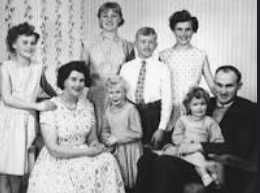
Children growing up in stable, two-parent households have significantly improved educational, financial, and social outcomes, according to a report.
The Institute for Family Studies report highlights that not only does having a present mother and father lead to greater life success but it has been doing so increasingly over time.
{snip}
The backdrop of the report, released Wednesday, is that the number of those who believe single-parent households are just as good as two-parent ones, or that the structure does not matter, is growing. This sentiment has been driven by negative portrayals of family, marriage, and child-rearing in the media, academia, and “elite discourse,” the report noted.
This mentality is highlighted by the fact that the percentage of people who believe it is important for a couple who had a child together to marry “legally” fell from 76% in 2006 to 60% in 2020, and it has been driven by college-educated, politically liberal persons, only 30% of whom between ages 18 and 55 believed children were “better off” with married parents in 2022. Ninety-one percent of college-educated conservatives believe children are “better off” in two-parent households.
“But because a majority of college-educated Americans lean left, the drift among more well-educated men and women in the United States has been towards the view that marriage is not important for children,” the study says.
{snip}
By comparison, millennials who grew up with two parents graduated college at 40%, compared to single-parent classmates who only graduated at a rate of 17%.
The trend holds for lifetime financial success as well, as 77% of millennials from intact families reached middle-class or higher income brackets by their mid-thirties, compared to 57% of millennials who grew up in single-parent households.
This increase is generational as well, with 71% of boomers from two-parent households reaching middle income or higher by their mid-thirties, compared to 55% of those in single-parent households.
{snip}
Wilcox says the situation is “ironic” because college-educated liberals are both the group most likely to enjoy the benefits of stable families and “deny or minimize” their value.
“What we have, then, is a troubling family irony unfolding in the United States. On the one hand, Americans — especially well-educated liberals who dominate the discourse and policy related to family life — increasingly discount the value of marriage and stable, two-parent homes for children,” he wrote. “On the other hand, the actual benefits of marriage and a stable family for kids appear to be mounting.”
{snip}
The report points to fathers being more present in their children’s lives than they have been in the past, giving children high-value paternal attention found to be increasingly important for social success, especially among boys, but also among girls.
*
In addition, a growing number of married women are in the workforce, raising the financial benefits of marriage for their children, meaning parents can devote more resources to their children, such as tutoring, sports, and college tuition, than nontraditional families.
Finally, children are experiencing “low-conflict” divorce, initiating a separation for “less serious reasons than in the past,” as compared to domestic violence or recurring fights, Wilcox wrote, at a higher rate today than before. While studies find that “high-conflict” divorce can bring psychological benefit to children, low-conflict separation does not and may actually be considered “most likely to be stressful to children.”
* ORIGINAL ARTICLE:
https://www.washingtonexaminer.com/news/two-parent-households-break-progressive-social-narratives-marriage